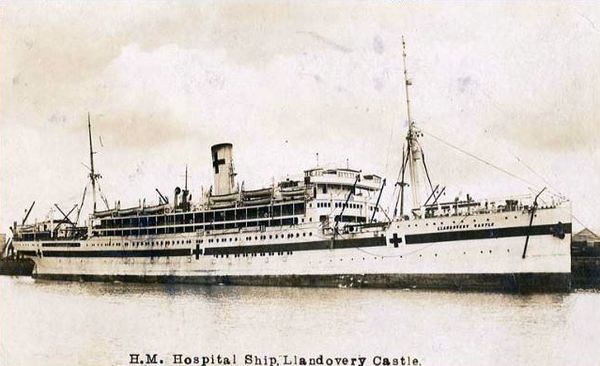Difference between revisions of "HMHS Llandovery Castle"
From Our Contribution
(→Alexandria to Marseilles 20 - 25 March 1916) |
(→Remarks) |
||
| Line 40: | Line 40: | ||
Owned by the Union-Castle Line and designed to carry 429 passengers. As a hospital ship she could service 622 beds with 102 medical staff. | Owned by the Union-Castle Line and designed to carry 429 passengers. As a hospital ship she could service 622 beds with 102 medical staff. | ||
| − | The sinking of the Llandovery Castle by U-Boat U-86 is considered one of the worst atrocities of the war. She was employed as a hospital ship and had her cross lights on when she was torpedoed without warning by a German submarine. | + | The sinking of the Llandovery Castle by U-Boat U-86 off southern Ireland on 27 June 1918 is considered one of the worst atrocities of the war. She was employed as a hospital ship and had her cross lights were on when she was torpedoed without warning by a German submarine. |
| + | |||
| + | Firing at a hospital ship was against international law and the standing orders of the Imperial German Navy. The captain of U-86, Helmut Brümmer-Patzig, sought to destroy the evidence of torpedoing the ship. When the crew took to the lifeboats, U-86 surfaced, ran down all but one of the lifeboats and machine-gunned many of the survivors. | ||
Only 24 people survived out of the 258 people on board. | Only 24 people survived out of the 258 people on board. | ||
Revision as of 01:48, 28 July 2017
 | |
| History | |
|---|---|
| Name | HMHS Llandovery Castle |
| Builder/Built | 1914 Barclay Curle & Co, Glasgow |
| Type | Passenger liner (twin screw) |
| Displacement | 10,639 tons |
| Speed | 15 knots |
Remarks
Owned by the Union-Castle Line and designed to carry 429 passengers. As a hospital ship she could service 622 beds with 102 medical staff.
The sinking of the Llandovery Castle by U-Boat U-86 off southern Ireland on 27 June 1918 is considered one of the worst atrocities of the war. She was employed as a hospital ship and had her cross lights were on when she was torpedoed without warning by a German submarine.
Firing at a hospital ship was against international law and the standing orders of the Imperial German Navy. The captain of U-86, Helmut Brümmer-Patzig, sought to destroy the evidence of torpedoing the ship. When the crew took to the lifeboats, U-86 surfaced, ran down all but one of the lifeboats and machine-gunned many of the survivors.
Only 24 people survived out of the 258 people on board.
Soldiers carried
Alexandria to Marseilles Acting as a troop ship 20 - 25 March 1916
- Aubrey Walter (Swazz) Mead
- Ivor Trehane Birtwistle Post WW1 men